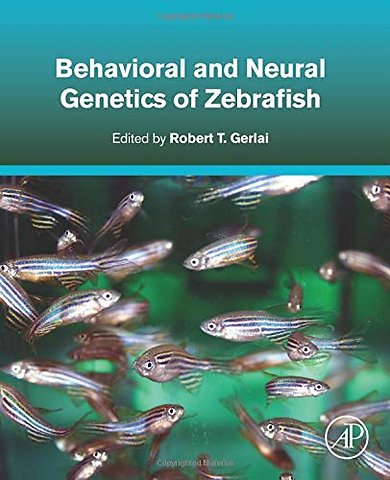<p>Section I. Introduction to Zebrafish: Natural Habitat, Ethology, and Appropriate Maintenance Conditions<br>1. The biotic and abiotic environment of zebrafish <br>2. Maintenance and breeding of zebrafish, with some ethological and ecological considerations in mind</p> <p>Section II. The Behavior of the Fry<br>3. The larval visual system and behavioral responses to visual stimuli<br>4. Visual escape in larval zebrafish: Stimuli, circuits, and behavior<br>5. Functional review of hearing in zebrafish<br>6. The development of social behavior<br>7. Classical and operant conditioning in larval zebrafish</p> <p>Section III. The Behavior of the Adult<br>8. Motor patterns and swim path characteristics: the ethogram of zebrafish<br>9. Behavioral criteria and techniques to define sleep in zebrafish<br>10. Fear responses and antipredatory behavior of zebrafish: A translational perspective<br>11. Social behavior and its psychopharmacological and genetic analysis in zebrafish<br>12. Associative and non-associative learning in adult zebrafish<br>13. Relational learning in zebrafish: A model of declarative memory in humans?</p> <p>Section IV. Genetic Methods for Zebrafish<br>14. Molecular genetic approaches to dissect complex behaviors in zebrafish<br>15. Behavioural research in zebrafish (Danio rerio): strain as source of variation<br>16. Designer mutants for behavioral genetics<br>17. Optogenetics<br>18. The CRISPR/Cas system in zebrafish<br>19. PhOTO Zebrafish and primed conversion: Advancing the mechanistic view of development and disease</p> <p>Section V. Disease Models and Behavior Genetic Applications<br>20. Acute and chronic alcohol effects in zebrafish<br>21. Behavioural genetics of embryonic ethanol exposure in zebrafish: A model for FASD<br>22. Life, death, and regeneration of zebrafish dopaminergic neurons<br>23. Parkinson's Disease<br>24. Seizures and epilepsy<br>25. Aging, circadian clock and neurogenesis: the zebrafish approach<br>26. Modeling autism spectrum disorders in zebrafish<br>27. Studying aggression in zebrafish<br>28. Methylmercury induces transgenerationally transmissible epigenetic changes influencing zebrafish behavior</p> <p>Section VI. Big Data and Bioinformatics<br>29. The design of behavioral screening in zebrafish<br>30. Software tools for behavioral phenotyping of zebrafish across the life span<br>31. The Zebrafish Genome Sequencing Project: Bioinformatics resources<br>32. Registered, standardized, and interactive: a review of online resources for zebrafish neuroanatomy</p>
